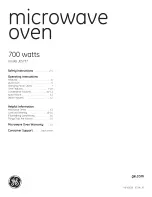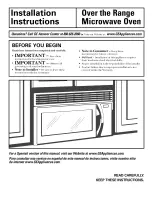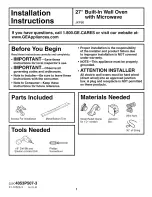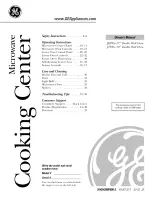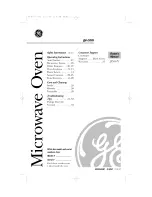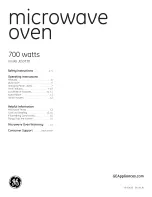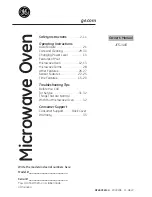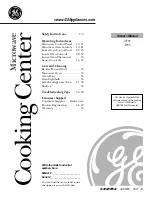
Microwave operation
49
Suitable dishware
Fire hazard due to flammable
materials.
Disposable containers made out of
plastic, paper, or other flammable
materials can ignite, causing damage
to the oven.
Do not leave the oven unattended
when reheating or cooking food in
disposable containers made of
plastic, paper, or other flammable
materials.
You can use the following dishware and
materials:
- Heat-resistant glass and ceramic
glass
Exception: crystal glass as it contains
lead and may crack.
- Porcelain
– Without metallic decoration
Metallic decoration (e.g., gold rims
or cobalt blue) can cause sparking.
– Without hollow knobs and handles
Moisture can gather in hollow
knobs and handles. When the
moisture evaporates, pressure can
build up and the item can explode.
- Unpainted stoneware and stoneware
with underglaze paints
Danger of injury caused by hot
dishware.
Stoneware can get hot.
Use pot holders when using
stoneware.
- Plastic dishware and disposable
plastic containers with the
Microwave
operating mode
Tip:
To protect the environment, avoid
the use of disposable containers.
Plastic dishware must be heat-
resistant to a minimum of 230°F
(110°C). Otherwise, the plastic may
melt and fuse with the food.
Only use plastic dishware with the
Microwave
operating mode.
Do not use plastic dishware with the
Combi Auto Roast
,
Combi
Convection Bake
/
Combi Convection
Roast
,
Combi Broil
, or
Combi
Conv Broil
operating modes.
- Microwave-safe plastic dishware
Special plastic dishware designed for
use in microwave ovens is available
from retail outlets.
- Styrofoam dishware
For briefly heating food.
- Plastic boiling bags
For cooking and reheating. They
should be pierced before use. The
holes allow the steam to escape. This
prevents a build-up of pressure from
forming and the bag from bursting.
There are also special bags available
for steam cooking which do not need
to be pierced. Please follow
instructions given on the packet.
- Roasting bags and tubes
Please follow the manufacturer’s
instructions.































